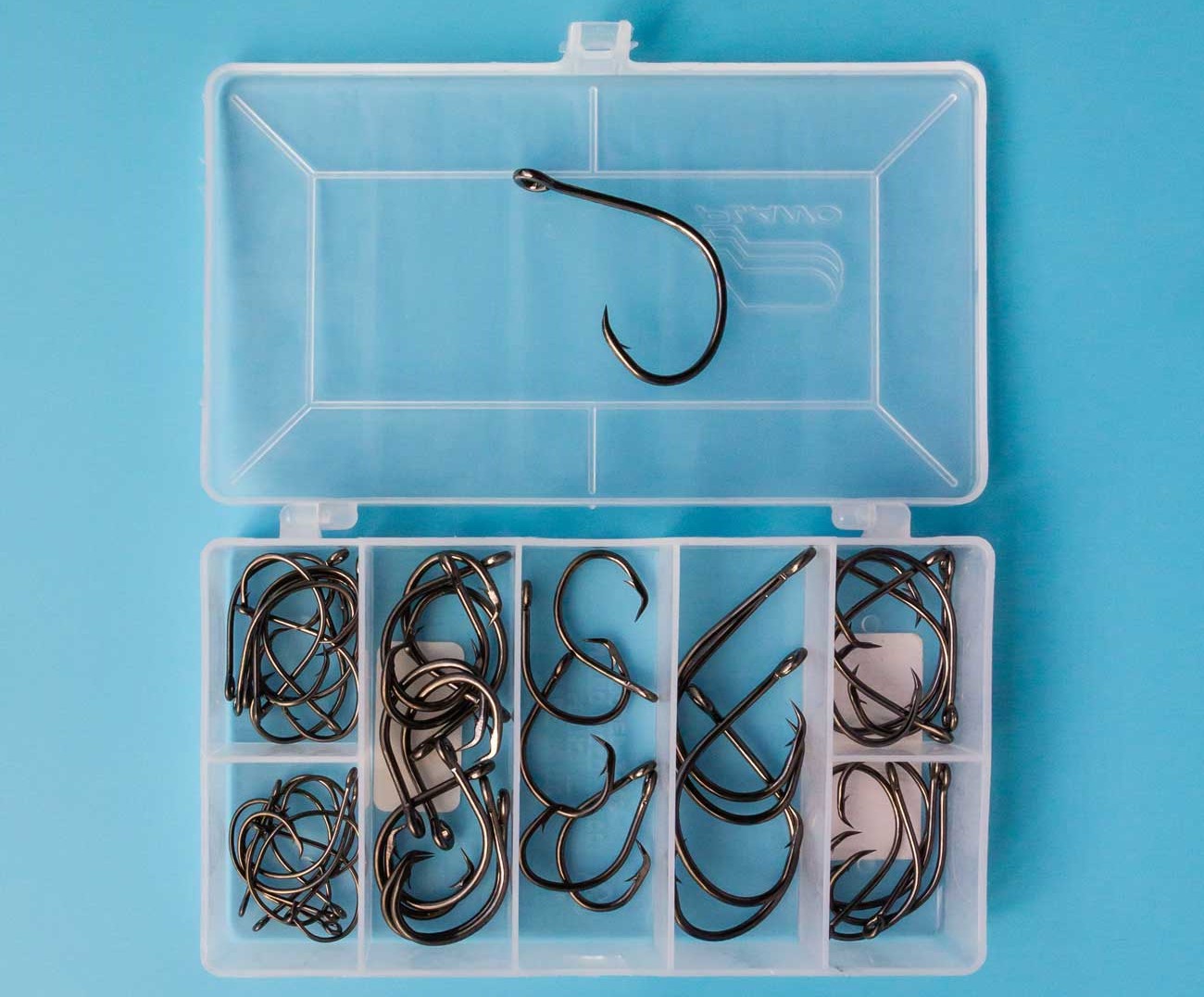

Articles
How To Store Fishing Hooks
Modified: January 19, 2024
Learn the best techniques and tips for storing fishing hooks in this comprehensive collection of articles. Explore various methods to keep your hooks organized and in great condition.
(Many of the links in this article redirect to a specific reviewed product. Your purchase of these products through affiliate links helps to generate commission for Storables.com, at no extra cost. Learn more)
Introduction
When it comes to fishing, having the right equipment is essential. And one of the most important pieces of equipment for any angler is their fishing hooks. Fishing hooks come in a variety of shapes, sizes, and materials, and each type is designed for a specific purpose.
However, many anglers overlook the importance of properly storing their fishing hooks. Neglecting proper storage can lead to hooks becoming dull, damaged, or even rusty, rendering them ineffective for catching fish. This is why it is crucial to understand the different types of fishing hooks, the factors to consider when storing them, and the proper storage methods to ensure their longevity.
In this article, we will explore the various types of fishing hooks, the factors to consider when storing them, and the proper storage methods that will help keep your hooks in prime condition for your next fishing trip.
Key Takeaways:
- Properly storing fishing hooks is crucial for maintaining their effectiveness and longevity. Consider factors like size, sharpness, protection, accessibility, and portability when choosing a storage method.
- Tackle boxes, hook organizers, and ziplock bags are effective storage options for fishing hooks. Avoiding exposure to moisture and extreme temperatures, and organizing and sorting hooks efficiently, are essential for preserving their quality.
Read more: How To Store Fish While Fishing
Types of Fishing Hooks
Before we dive into the different storage methods for fishing hooks, let’s take a closer look at the various types of hooks available. Each type of hook is designed to serve a specific purpose and is suited for different fishing techniques and target species.
- Straight Shank Hooks: These hooks have a simple, straight design and are suitable for a wide range of fishing applications.
- Offset Hooks: Offset hooks have a curved shank that creates a gap between the hook point and the shank. This design helps increase hook-up ratios and is commonly used in bait fishing.
- Circle Hooks: Circle hooks are known for their circular shape and inward bending hook point. They are designed to hook fish in the corner of the mouth, reducing the chances of deep-hooking and increasing survival rates when catch and release fishing.
- Jig Hooks: Jig hooks feature a weighted head and are commonly used in jigging techniques. They are versatile and can be used for a variety of fishing applications.
- Treble Hooks: Treble hooks consist of three prongs and are commonly used on lures. They provide increased hooking potential but can also result in more snagging if not used correctly.
These are just a few examples of the many different types of fishing hooks available. It’s important to choose the right hook for your specific fishing needs and target species.
Now that we have a better understanding of the various types of fishing hooks, let’s discuss the factors you should consider when storing these important pieces of fishing equipment.
Factors to Consider When Storing Fishing Hooks
Proper storage of fishing hooks is crucial to maintain their effectiveness and longevity. When deciding on the storage method for your hooks, it’s important to consider a few factors that can affect their condition.
1. Size: Different types of fishing hooks come in various sizes, ranging from tiny hooks for small baitfish to larger hooks for big game fishing. Consider the size of your hooks when selecting a storage method to ensure they fit properly and are organized effectively.
2. Sharpness: Fishing hooks should be stored in a way that prevents them from damaging or dulling each other. Hooks that become dull or damaged may not penetrate the fish’s mouth effectively, leading to missed hooksets or lost fish. A proper storage method will help maintain the sharpness of your hooks.
3. Protection: Protecting your hooks from external factors such as moisture, rust, and physical damage is crucial. Exposure to moisture can cause hooks to rust, while physical damage can occur when hooks rub against each other or other objects. Consider storage options that offer adequate protection for your hooks.
4. Accessibility: Being able to access your hooks easily and quickly is important when you’re out on the water. Look for storage methods that offer convenient access to your hooks so you can spend less time searching and more time fishing.
5. Portability: If you fish in different locations or need to transport your fishing equipment, portability is a key factor to consider. Choose a storage method that is lightweight and easy to carry, such as tackle boxes or hook organizers that can fit comfortably in your fishing bag.
By considering these factors, you can make an informed decision about the best storage method for your fishing hooks. In the next section, we will explore different storage options and methods that you can implement to keep your hooks organized and in optimal condition.
Proper Storage Methods for Fishing Hooks
When it comes to storing fishing hooks, there are several effective methods that you can employ to keep your hooks organized and in good condition. Let’s explore some of these storage options:
- Using Tackle Boxes: Tackle boxes are a popular choice for storing fishing hooks as they offer compartments and trays designed specifically for organizing hooks of various sizes. Look for tackle boxes with adjustable dividers, so you can customize the compartments to fit your specific hook sizes. Tackle boxes also provide protection from moisture and physical damage, ensuring that your hooks remain sharp and rust-free.
- Using Hook Organizers: Hook organizers are specialized storage solutions that are designed specifically for fishing hooks. These organizers typically consist of small compartments that can hold individual hooks, keeping them separate and preventing them from tangling or damaging each other. Hook organizers are compact, portable, and offer easy access to your hooks when you need them most.
- Using Ziplock Bags: Ziplock bags are a simple and cost-effective option for storing fishing hooks. They provide airtight sealing, protecting your hooks from moisture and preventing them from rusting. You can arrange your hooks by size or type in separate bags and label them for easy identification. Ziplock bags are lightweight and can be easily carried in your fishing bag.
- Avoiding Exposure to Moisture: Moisture is one of the main culprits that can cause hooks to rust and become dull. To prevent this, consider using desiccant packets or silica gel packets in your storage containers to absorb excess moisture. Additionally, make sure to dry your hooks thoroughly after each fishing trip before storing them.
- Avoiding Exposure to Extreme Temperatures: Extreme temperatures can also affect the quality of your fishing hooks. Avoid exposing your hooks to direct sunlight or extreme heat, as this can cause damage or deterioration. Store your hooks in a cool, dry place to maintain their integrity.
Remember to regularly inspect your hooks for any signs of rust, damage, or dullness. Replace any hooks that show signs of wear to ensure optimal performance on your next fishing adventure.
Now that we’ve covered various storage methods, let’s explore some additional tips for organizing and sorting your fishing hooks.
Using Tackle Boxes
Tackle boxes are a popular and effective storage solution for fishing hooks. These sturdy cases are designed with specialized compartments and trays that allow you to organize your hooks conveniently. Here are some tips on using tackle boxes for storing your fishing hooks:
- Select the Right Tackle Box: When choosing a tackle box, it’s important to consider the size and type of fishing hooks you use. Look for a tackle box that offers adjustable dividers, allowing you to create compartments that fit your hook sizes perfectly.
- Organize by Size or Type: Sort your hooks based on their size or type within the tackle box. You can use separate compartments or trays for different hook sizes, making it easier to find the specific hooks you need when you’re out on the water.
- Label or Color Code: To enhance organization and quick identification, consider labeling or color-coding the compartments in your tackle box. This will help you locate hooks quickly, especially when you’re in a rush or dealing with low light conditions.
- Store Sharp Hook Points Safely: To prevent hooks from accidentally snagging or damaging other hooks or your fishing gear, make sure to store hooks with sharp points facing downwards or away from other compartments.
- Remove Excess Packaging: If your hooks come in blister packs or have excessive packaging, consider removing them and storing the hooks directly in the tackle box. Removing packaging can help you save space and make your tackle box more streamlined.
- Keep Tackle Box Dry: Moisture can cause hooks to rust, so it’s vital to keep your tackle box dry. If your tackle box is not waterproof, consider placing a moisture-absorbing packet or silica gel inside to absorb any excess moisture.
- Regular Maintenance: Regularly clean and inspect your tackle box to ensure it is in good condition. Remove any debris, replace damaged dividers or trays, and wipe down the interior to keep it clean and ready for your next fishing trip.
Using a tackle box for your fishing hooks not only helps keep your hooks organized but also provides protection against moisture and physical damage. Tackle boxes are portable and convenient, allowing you to bring your hooks wherever your fishing adventures take you. So, invest in a quality tackle box and enjoy the benefits of having your hooks neatly stored and readily accessible.
Now that we’ve explored using tackle boxes as a storage option, let’s move on to another effective method: using hook organizers.
Read more: How To Store Fish
Using Hook Organizers
Hook organizers are specialized storage solutions designed specifically for fishing hooks. These compact and portable organizers provide individual compartments or slots to keep your hooks separate and prevent tangling or damage. Here are some tips for using hook organizers effectively:
- Select the Right Hook Organizer: There are various types of hook organizers available, such as plastic cases with individual compartments or foam inserts with slits to hold hooks. Choose an organizer that suits your needs and the size of your hooks.
- Categorize by Size or Type: Depending on your preferences, you can organize your hooks by size or type within the hook organizer. This will help you quickly locate the specific hooks you need for each fishing situation.
- Label or Color Code: To enhance organization, consider labeling or color-coding each compartment or slot in the hook organizer. This will make it easier for you to identify and access the desired hooks, especially when you’re in a hurry.
- Secure Hooks Properly: When placing hooks in the organizer, make sure they are securely in place to prevent them from falling out or getting mixed up. Foam inserts with slits provide a snug fit, while plastic cases often have individual lids for each compartment to keep hooks secure.
- Portable and Lightweight: Hook organizers are designed to be portable, making them perfect for anglers who need to carry their hooks with them. The lightweight and compact nature of hook organizers allows for easy transportation in a fishing bag or pocket.
- Protection and Rust Prevention: Hook organizers provide protection for your hooks, preventing them from getting damaged or rusting. However, it’s still a good practice to periodically inspect and clean your hooks, as well as check for any signs of rust or deterioration.
- Expandable Organizers: Some hook organizers have expandable designs, allowing you to add or remove compartments based on your needs. These versatile organizers can be customized to accommodate different hook sizes or additional accessories.
Using hook organizers not only keeps your hooks organized and easily accessible but also protects them from damage and tangling. The compact size and portability of hook organizers make them a convenient choice for anglers who prefer to travel light. So, invest in a reliable hook organizer and keep your hooks in optimal condition for your next fishing adventure.
With the tackle box and hook organizer methods covered, let’s move on to another simple yet effective storage option: using ziplock bags.
To store fishing hooks, use a tackle box with individual compartments to keep hooks organized and prevent them from tangling. Additionally, consider using small plastic bags or foam inserts to further protect the hooks.
Using Ziplock Bags
Ziplock bags are a versatile and cost-effective option for storing fishing hooks. These airtight bags provide protection against moisture, rust, and physical damage. Here are some tips for using ziplock bags effectively for your fishing hooks:
- Sort Hooks by Size or Type: Before placing your hooks in ziplock bags, organize them by size or type. This will allow for easier retrieval when you need specific hooks for different fishing techniques or target species.
- Label and Identify: To keep your ziplock bags organized, consider labeling them with the hook size or type. You can use permanent markers or pre-printed labels to ensure quick identification when you’re in a hurry.
- Avoid Overstuffing: It’s essential not to overcrowd the ziplock bags with too many hooks. Overstuffing can lead to tangling or damage to the hooks. Leave enough space to ensure hooks can be easily retrieved without any difficulty.
- Double Bag for Added Protection: For extra protection against moisture and rust, consider double bagging your hooks. Place the individual bags of hooks inside a larger ziplock bag to create an additional layer of protection against environmental factors.
- Compact and Portable: Ziplock bags offer the advantage of being incredibly lightweight and compact, making them easy to carry in your fishing bag or pocket. They provide a convenient storage solution for anglers who are constantly on the move.
- Regularly Inspect and Replace: Even though ziplock bags provide a level of protection, it’s still important to periodically inspect your hooks for any signs of rust, damage, or deterioration. Replace any hooks that show signs of wear to ensure optimal performance.
- Consider Packaging Hooks Separately: If your hooks come in blister packs or have individual packaging, you can store them separately in ziplock bags. This ensures that each hook is protected and prevents them from tangling or damaging each other.
Using ziplock bags is a simple and affordable way to store fishing hooks while providing protection against moisture and rust. They are lightweight, portable, and allow for easy organization and identification of your hooks. So, stock up on ziplock bags and keep your hooks in excellent condition for your fishing adventures.
Now that we’ve covered different storage methods for fishing hooks, let’s move on to some important considerations to keep in mind to maintain the quality and longevity of your hooks.
Avoiding Exposure to Moisture
Moisture is one of the main culprits that can cause fishing hooks to rust and deteriorate. It’s essential to take precautions to prevent exposure to moisture and keep your hooks in optimal condition. Here are some tips for avoiding moisture exposure:
- Dry Hooks Before Storage: After a fishing trip, make sure to dry your hooks thoroughly before storing them. Use a clean cloth or paper towel to wipe off any moisture or water droplets. Ensure that both the hooks and the packaging are completely dry.
- Use Desiccant or Silica Gel: Place a desiccant packet or silica gel packet in your storage container or tackle box. These moisture-absorbing materials help to extract any excess moisture, reducing the chance of rust formation on your hooks.
- Choose Waterproof Storage Options: Select storage options that are designed to be waterproof or have airtight seals. This will help protect your hooks from moisture absorption during storage and transportation.
- Avoid Storing Hooks in Damp Environments: When not in use, avoid storing your hooks in areas that are prone to high humidity or dampness, such as basements or garages. Opt for dry and well-ventilated spaces to minimize the risk of moisture exposure.
- Use Rust-Inhibiting Products: Consider using rust-inhibiting products specifically designed for fishing hooks. These products provide an additional layer of protection against moisture and help prevent rust formation, prolonging the life of your hooks.
- Regularly Inspect and Replace: Inspect your hooks regularly for any signs of rust or corrosion. If you notice any damage, replace the hooks immediately to maintain their effectiveness. It’s always better to be safe than sorry when it comes to rusty and compromised hooks.
By following these practices, you can minimize the risk of moisture exposure and ensure that your fishing hooks remain in top condition. Remember, preventing rust and maintaining the quality of your hooks is essential for successful fishing trips and maximizing your chances of landing that trophy catch.
Now that we’ve explored the importance of avoiding moisture exposure, let’s move on to another crucial factor to consider: avoiding exposure to extreme temperatures.
Avoiding Exposure to Extreme Temperatures
Exposure to extreme temperatures can have a detrimental effect on the quality and performance of your fishing hooks. It’s important to take precautions to protect your hooks from extreme heat or cold. Here are some tips for avoiding exposure to extreme temperatures:
- Avoid Direct Sunlight: Direct sunlight can heat up your storage containers and tackle boxes, potentially damaging your hooks. Store your hooks in a shaded area or use a storage system that provides UV protection.
- Choose a Stable Storage Location: Select a stable storage location for your hooks, away from sources of extreme heat or cold. Avoid storing your hooks in places like the trunk of your car, where temperatures can fluctuate significantly.
- Store Hooks in Climate-Controlled Areas: If possible, store your hooks in a climate-controlled environment, such as a cool and dry room or a temperature-controlled garage. This will help maintain a stable temperature and prevent damage due to extreme heat or cold.
- Avoid Freezing Temperatures: Extreme cold can cause hooks to become brittle and more prone to breakage. If you live in an area with freezing temperatures, consider storing your hooks indoors during the winter months to prevent damage.
- Warm Up Hooks Before Use: If you are fishing in cold weather, it’s a good practice to warm up your hooks before using them. This can be done by holding them in your hands for a few moments or dipping them in warm water. Warming up the hooks will help maintain their strength and prevent breakage.
- Regularly Inspect Hooks for Damage: Inspect your hooks regularly for any signs of damage or deterioration that may be caused by exposure to extreme temperatures. If you notice any weakness or deformation, replace the hooks to ensure their effectiveness.
By taking precautions to avoid exposure to extreme temperatures, you can protect your fishing hooks and ensure their longevity. Remember that extreme heat and cold can compromise the integrity of the hooks, leading to decreased performance and potential loss of fish. By storing and handling your hooks with care, you can maintain their quality and improve your chances of success on your fishing trips.
Now that we’ve covered the importance of avoiding exposure to extreme temperatures, let’s move on to some tips for organizing and sorting your fishing hooks effectively.
Read more: How To Store Ornament Hooks
Tips for Organizing and Sorting Fishing Hooks
Organizing and sorting your fishing hooks not only saves you time and frustration but also helps keep your hooks in optimal condition. Here are some helpful tips to keep your hooks organized and easily accessible:
- Categorize Hooks: Sort your hooks into categories based on size, type, or fishing technique. This will make it easier to find the hooks you need when you’re out on the water. You can use separate compartments, hook organizers, or ziplock bags for each category.
- Label or Color Code: To enhance organization, consider labeling compartments, hook organizers, or ziplock bags with the hook size, type, or any other relevant information. If color-coding is more your style, use colored stickers or markers to differentiate between different hook categories.
- Arrange Hooks Neatly: Whether you’re using tackle boxes, hook organizers, or ziplock bags, make sure to arrange your hooks neatly. Avoid tangling or overlapping hooks to prevent damage or difficulty in retrieving the ones you need.
- Use Dividers or Foam Inserts: If your storage containers or tackle boxes don’t have built-in dividers or compartments, consider using small plastic dividers or foam inserts. These can help keep your hooks separate and prevent them from getting entangled.
- Separate New and Used Hooks: Keep your new and used hooks separate to prevent confusion and ensure that your new hooks are readily available when needed. You can use separate compartments or bags to distinguish between the two.
- Regularly Evaluate and Reorganize: Periodically evaluate your hook storage system to identify any changes or adjustments needed. As your fishing techniques or preferences evolve, you may need to reorganize your hooks accordingly to optimize your fishing experience.
- Keep an Inventory: Maintaining an inventory of your fishing hooks is a great way to stay organized. Create a list or spreadsheet that includes the hook size, type, and quantity. This will help you keep track of your hooks and ensure that you have enough for your upcoming fishing trips.
- Replace Worn-Out Hooks: Regularly inspect your hooks for signs of wear, rust, or damage. If any hooks are no longer in optimal condition, replace them promptly to maintain the effectiveness of your tackle and increase your chances of success on the water.
By implementing these organizing and sorting tips, you can ensure that your fishing hooks are easily accessible and well-maintained. Staying organized not only saves time but also allows you to focus on what’s important – enjoying your time on the water and landing that big catch.
Now that we’ve explored various tips for organizing and sorting fishing hooks, let’s conclude our article.
Conclusion
Proper storage of fishing hooks is essential to maintain their effectiveness and ensure they remain in optimal condition for your fishing trips. By understanding the different types of fishing hooks and considering factors such as size, sharpness, protection, accessibility, and portability, you can make informed decisions on how to store your hooks effectively.
Tackle boxes provide organized compartments and trays for your hooks, allowing for easy access and protection against moisture and physical damage. Hook organizers offer individual slots or compartments to keep hooks separate and prevent tangling or damage. Ziplock bags are a versatile and portable option, providing airtight sealing to protect your hooks from moisture and rust.
Avoiding exposure to moisture is crucial in preventing rust and damage to your hooks. Using desiccant packets or silica gel and choosing waterproof storage options can help keep your hooks dry. Similarly, avoiding exposure to extreme temperatures, both heat and cold, is essential to preserving the integrity of your hooks.
Organizing and sorting your fishing hooks is key to efficiency on the water. Categorize your hooks by size, type, or fishing technique, and consider labeling or color-coding them for quick and easy identification. Regularly evaluate and reorganize your storage system to accommodate any changes in your fishing needs.
Remember to regularly inspect your hooks for signs of wear, rust, or damage. Replace any worn-out hooks to ensure the best performance and increase your chances of success on the water.
By implementing these storage methods, considering the factors that affect your hooks, and following the tips for organization and sorting, you can ensure that your fishing hooks remain sharp, rust-free, and ready for action. With well-maintained hooks, you can focus on the thrill of fishing and enjoy more successful and enjoyable angling experiences.
So, invest some time in organizing your fishing hooks and choose the storage method that works best for you. With proper storage, you’ll be well-prepared for every fishing adventure that comes your way.
Frequently Asked Questions about How To Store Fishing Hooks
Was this page helpful?
At Storables.com, we guarantee accurate and reliable information. Our content, validated by Expert Board Contributors, is crafted following stringent Editorial Policies. We're committed to providing you with well-researched, expert-backed insights for all your informational needs.
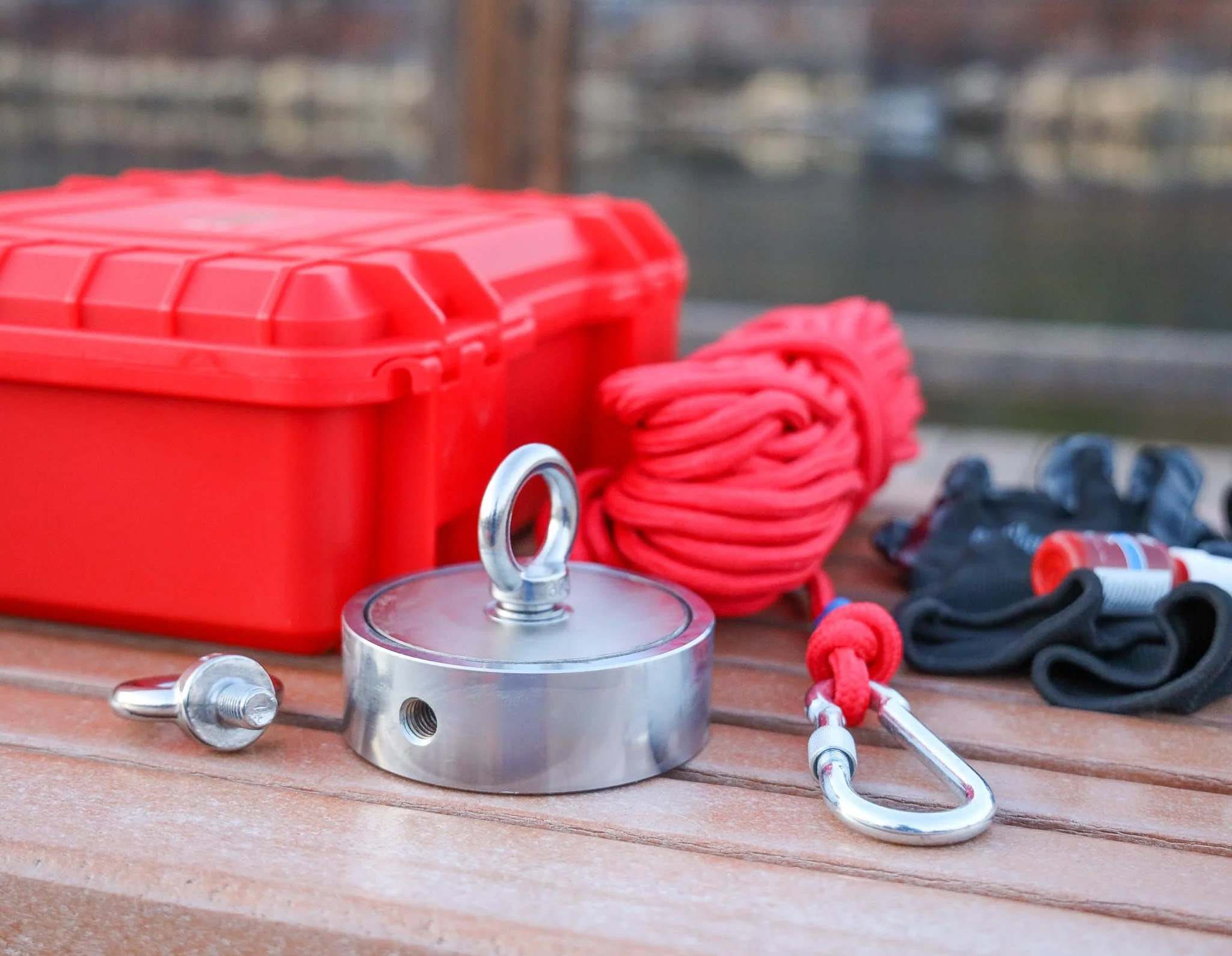
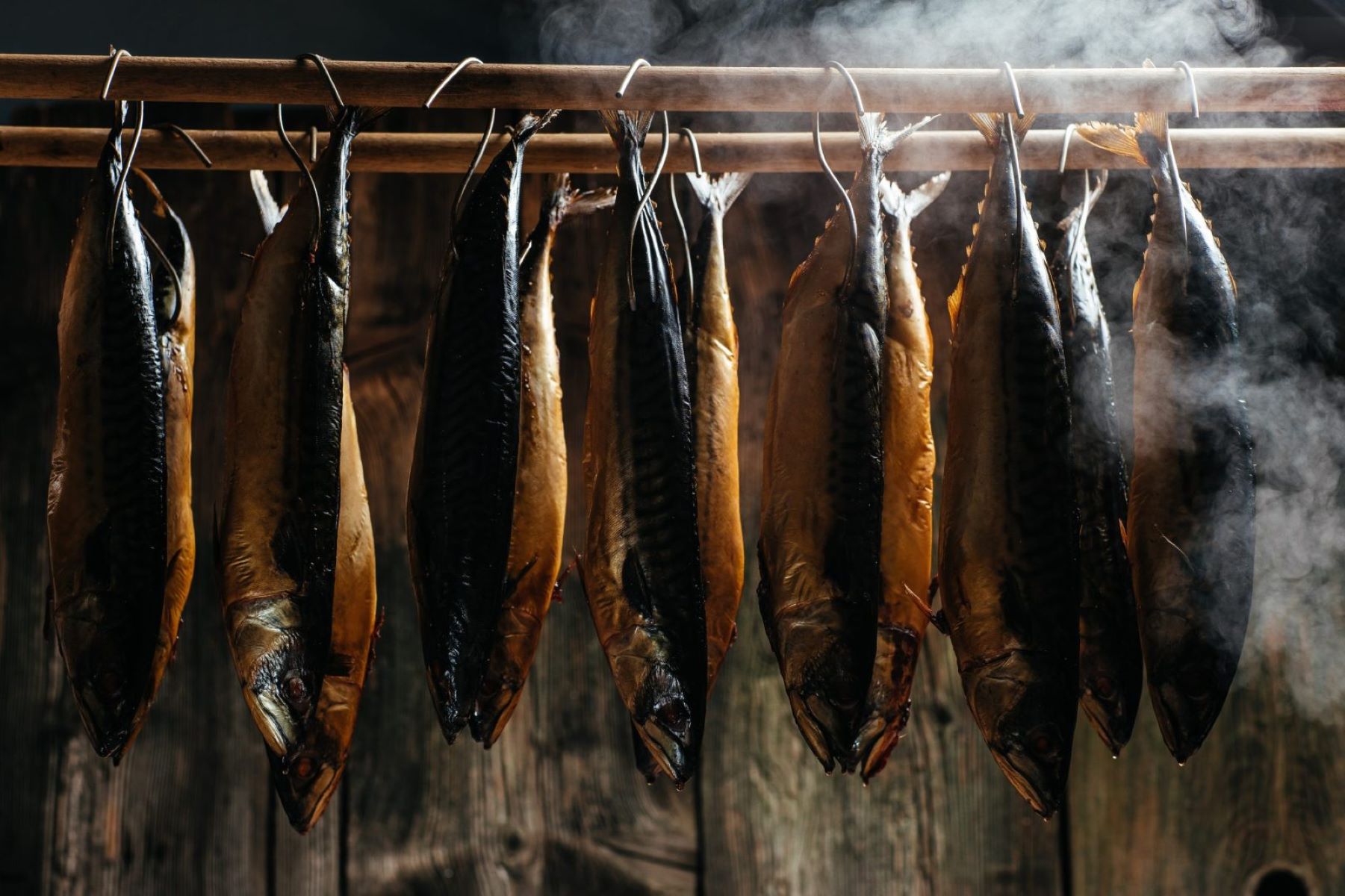


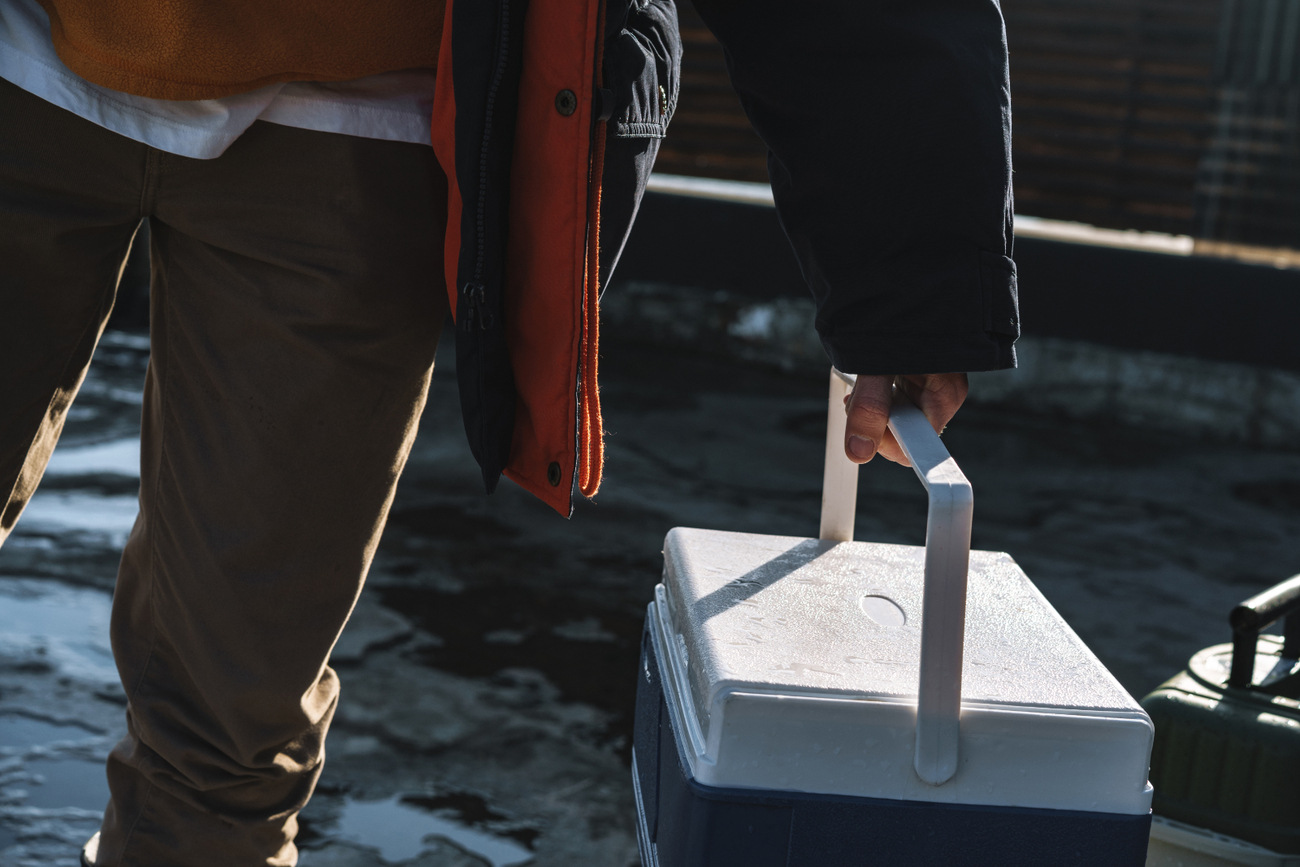
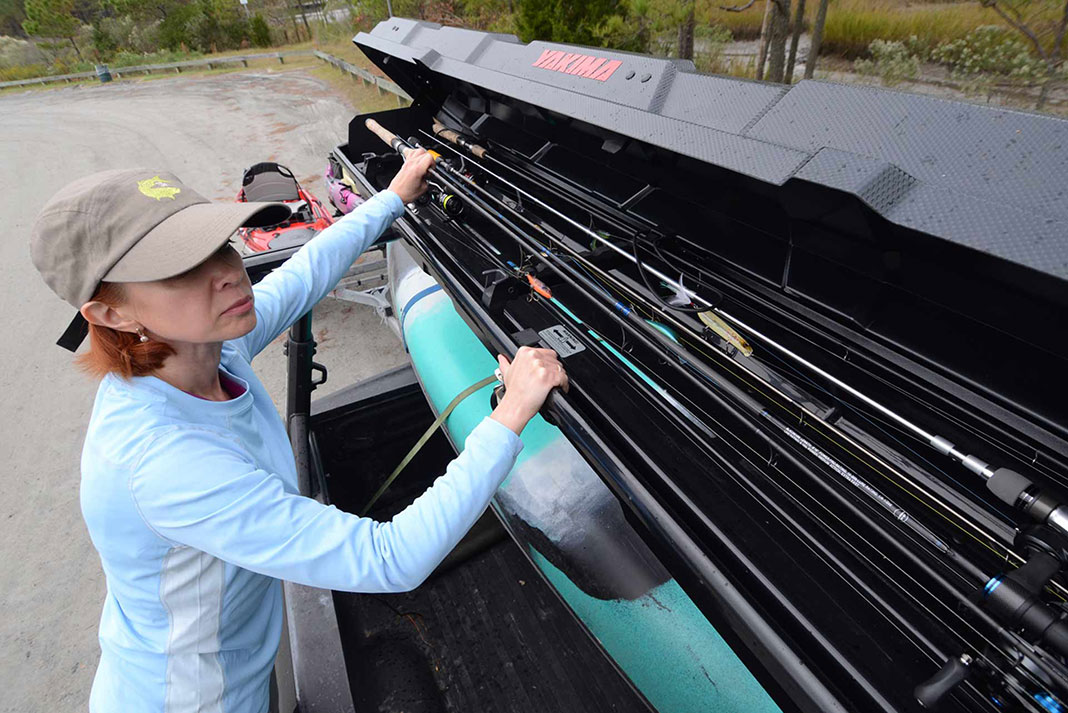
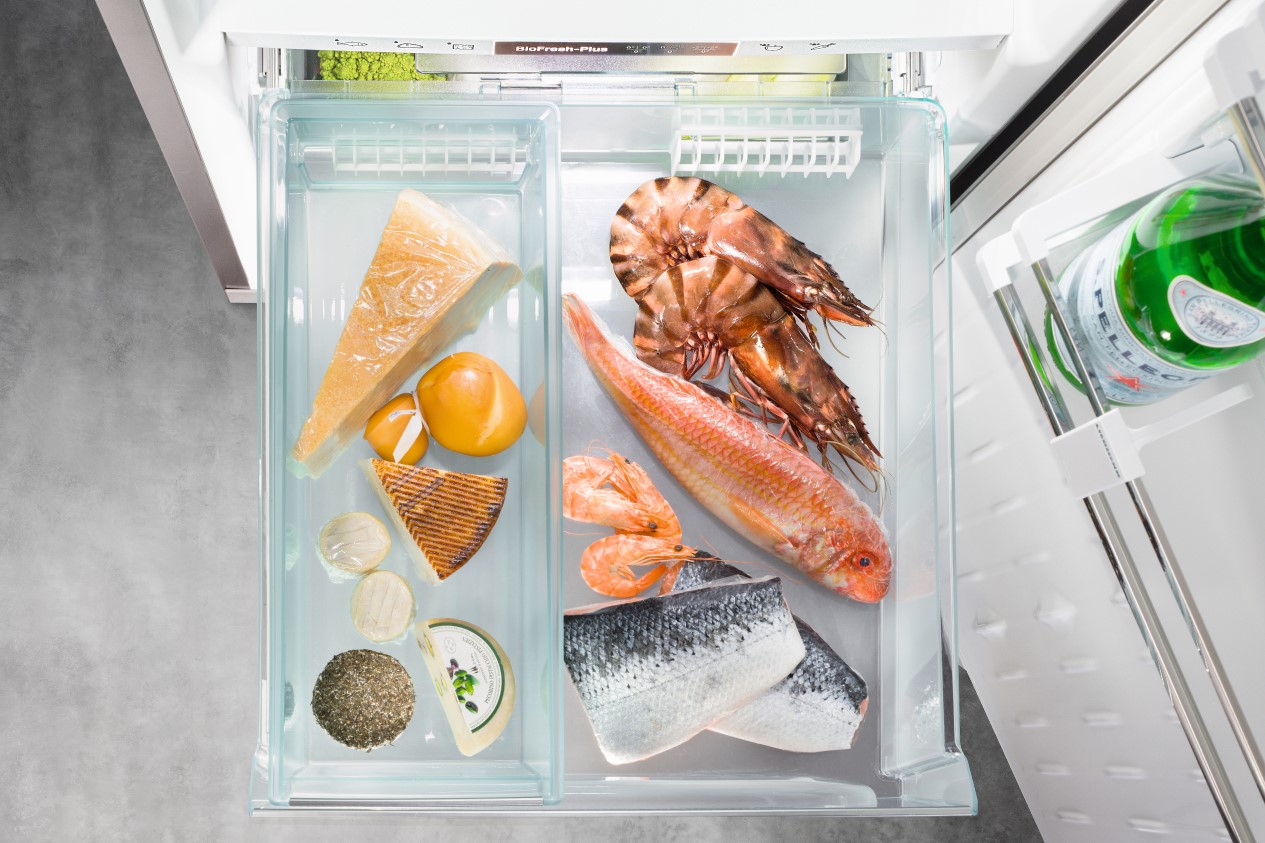
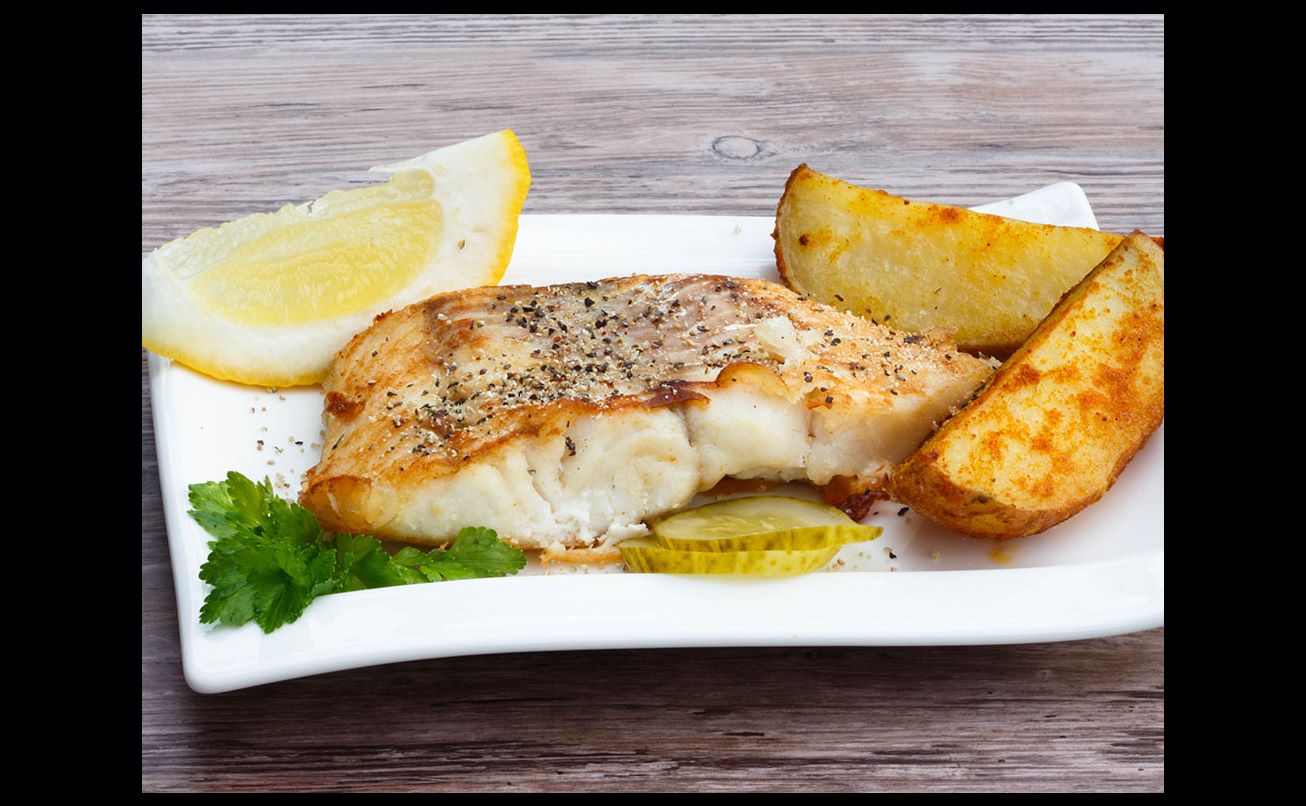

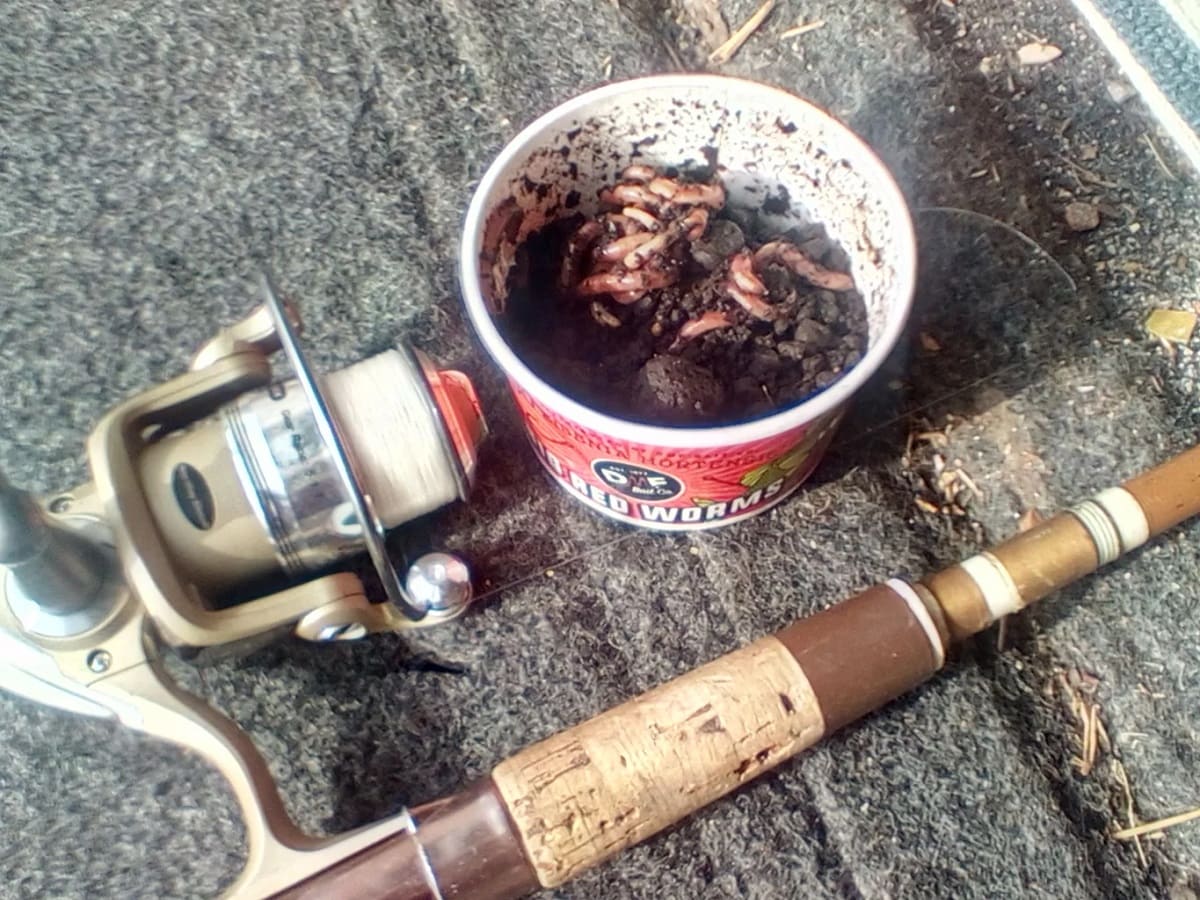

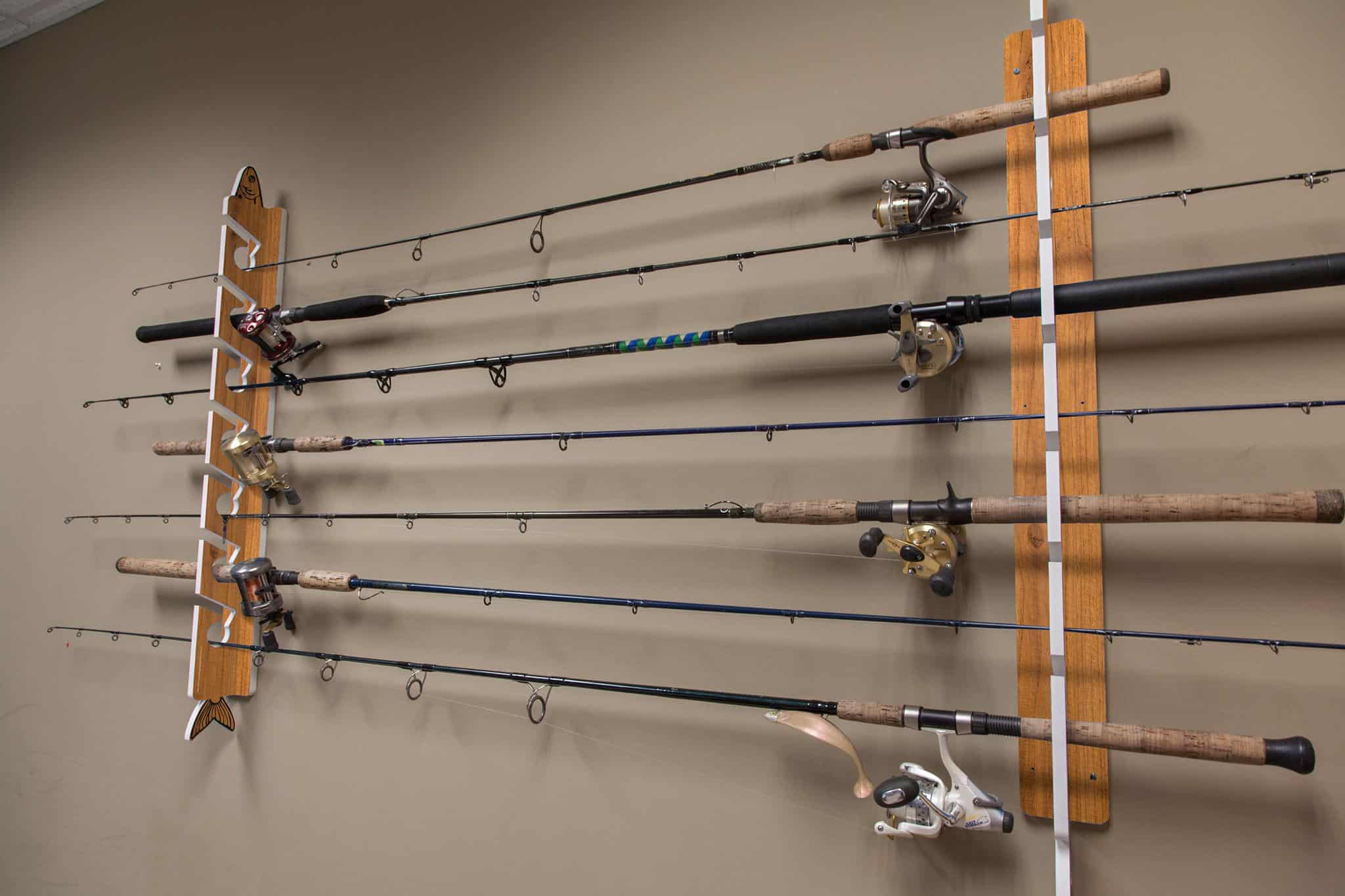


0 thoughts on “How To Store Fishing Hooks”